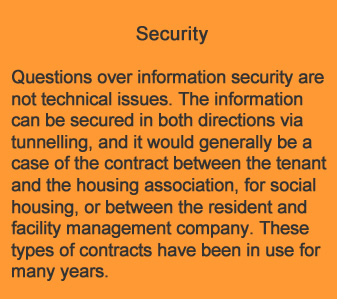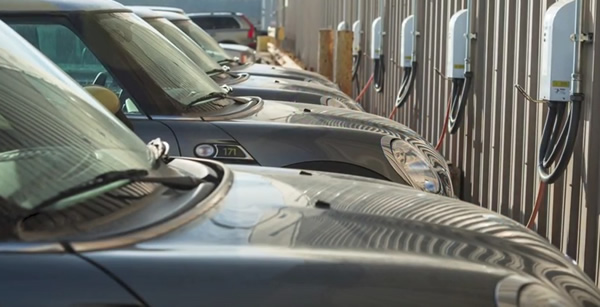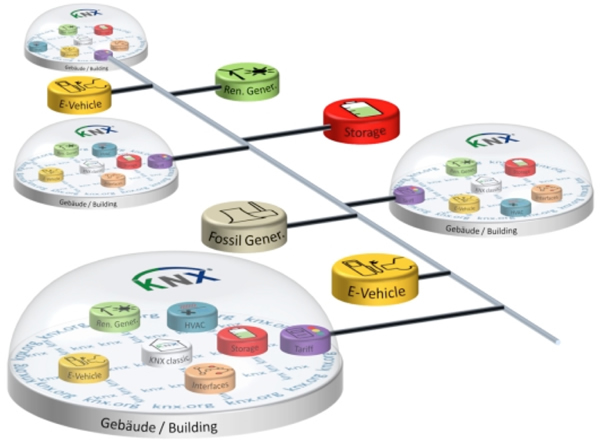 By Paul Foulkes, EchoHouse.
By Paul Foulkes, EchoHouse.
Our use of energy is a major issue for the world. As Leonardo DiCaprio put it in his recent Oscar acceptance speech, “Climate change is real, it is happening now, it is the most urgent threat facing our species, and we need to work collectively and stop procrastinating.”
As architects, designers and building planners, we can do our bit to help make a difference. In Part 1 of this series, I looked at why we need to design buildings with community energy integration. In Part 2, I will discuss why it is best to plan ahead rather than implement coping strategies.

Planning the Infrastructure
Before we start planning a building, we should ask some fundamental questions such as ‘Why do we want to build?’ and ‘What do we want to build?’ By answering these questions, we can work out what needs to go in the building and what kind of infrastructure we need.
Getting the necessary infrastructure in place requires effort and a level of innovation – not necessarily innovation of material but also innovation of thought. Without suitable infrastructure in place there will be no progress. The challenges of changing the infrastructure and creating new models for energy use are upon us now, but to tackle these challenges, we must have the practical tools in place.
There are undoubtedly challenges, but without foresight, we risk innovation stagnation. So how do we achieve that infrastructure, and what sets true infrastructure apart from wireless gadgets?
Hard Versus Soft Infrastructure
The challenges of energy use within the home go beyond simply installing wireless products such as thermostats. The new players to the market, such as Google and Apple, have a business strategy that does not necessarily fit with any long-term objectives of saving energy. The type of technology these companies are selling is designed to be replaced quickly; they want you to upgrade your hardware every 24 months because they will be following the same business strategy that they employ for mobile phones. This is not sustainable.

We need to develop communities that have control of their energy production and use, even if that is outside the existing regulatory framework. This can return power to the householder, whether owner or tenant.
Housing associations and suppliers of social or affordable housing, who have a different relationship with their buildings because it is long-term, are in the potentially enviable position where they can offer their tenants access to cheaper energy. If the offer to the tenant for energy is the best possible contract available on the market, then the tenant, regardless of the regulation, will want to be part of that. By creating communities that have integrated energy infrastructure, and by using all of the technology and skills that we have right now, these energy contracts can be offered.
The key to this type of offer is having housing that, if necessary can be monitored and managed – as a facility management company would do. This level of monitoring, metering and control can only be achieved with a technically-sound infrastructure in place that is capable of integration all the way down to appliance level. But what infrastructure is robust enough?
KNX Integrates Renewables with Ease
When planning and building an MDU (Multiple Dwelling Unit) it is perfectly normal to include a BMS (Building Management System). In fact it would be strange to plan a building of this size without some form of BMS and facility management. Yet, when we plan, design and build housing estates, a BMS or facility management and integrated infrastructure is generally completely omitted.
The need for a robust, tested and accepted infrastructure system is essential. There are a number of options, but the one that truly meets all the requirements is KNX. KNX offers a non-proprietary installation with multiple manufacturer options, the ability to work with other systems – from local RF such as EnOcean to large-scale BMS such as Trend, and is scalable from individual housing to large-scale commercial and industrial. Accepted as a basis for assisted living additions and usable in healthcare, KNX can also integrate renewables with ease.

All of the information on the KNX infrastructure can be accessed as required and used to implement energy-efficient strategies with buildings, including best-scenario charging and energy use from local production sources into local energy storage.
For housing associations for instance, this can allow non-invasive monitoring of multiple systems, such as ventilation and heating. With this information, maintenance schedules can be targeted, carrying out work when needed, or highlighting faults quickly – even before the resident realises that there is a problem.
Larger energy production facilities can have their own BMS infrastructure that can be fed onto the IP network and easily managed at the community level. Whether local or smart grid, or a National Grid connection taking information from smart meters via M-Bus, with KNX the idea of a community-controlled grid is a reality: with or without renewables, with or without energy storage, and with self-consumption or feed-in tariffs.
What will Happen to the National Grid?
The role of the National Grid may change with the advent of localised grids. For instance, there may be a need for high-current applications for certain communal uses such as EV charging points. In the future, it could be that the majority of the electricity that we buy from the National Grid is used to charge our cars – which can also be used as an additional storage point for localised production from the house or local grid. This will definitely require regulatory changes and a different approach to how we buy, use and store our energy.

With the advent of half-hourly tariffs and very low-cost National Grid supply at off-peak times, the need for an infrastructure that automatically tracks National Grid cost and ensures local battery storage being charged from the cheapest, most abundant source, is vital. A large-scale KNX infrastructure can supply this level of monitoring, control, automation and integration. And it can do it now.
Smart meters will play a vital role in the level of connectivity, but smart meters, as they are being rolled out at the moment, assume a National Grid connection. Individual metering of appliances is preferable, and this needs an infrastructure that can be flexible around each and every occupant.

Regulatory Constraints
In the UK, deregulation was introduced to protect the consumer from large power companies by allowing free choice. The irony is that the mechanism introduced to protect the consumer may be the one hurdle that prevents them from making the ultimate choice of whether to choose the National Grid or the potentially cheaper, more sustainable and more secure local smart grid! The requirement to connect every home to the National Grid adds cost and complication. If you want to use a local grid, it may mean that you will be forced to install a separate grid supply connection to your home.
This double connection could be ‘bypassed’ by allowing local supply companies, in the form of communities, to manage their own energy supply – this could also be a housing association supplying its properties. For instance, National Grid connection would be under housing association control and then supplied, maybe as a mix of local and National Grid-supplied energy. This is metered. Should a resident want a National supply, this can be controlled and metered via the housing association/community energy company. Housing associations, or their equivalent, could become energy producers, and although this may be more complicated in terms of administration, it does allow a more technically-flexible approach to supply of energy.
Conclusion
It is evident that there are hurdles to overcome in integrating community energy, but these hurdles are more regulatory and administrative than technical. With KNX infrastructure in buildings, we are future proofing them in preparation for when the regulations catch up with those willing to innovate and strive for better buildings.
And what if those regulations come later rather than sooner? With KNX, buildings are, in any case, more energy-efficient and give occupants the control that they want. What planning ahead does however, is help us avoid having to implement poor coping strategies at the time when we need to make the changes.
Revolutions typically start as evolutions that, at some point, gather their own momentum. Part of that evolution may need to come from innovative ideas and those with the vision to drive them.
Paul Foulkes is an engineer and KNX consultant for EchoHouse, with the ambition of integrating technology and community and making our living environment better. He is also a Business Development Manager for Entech Ltd.












